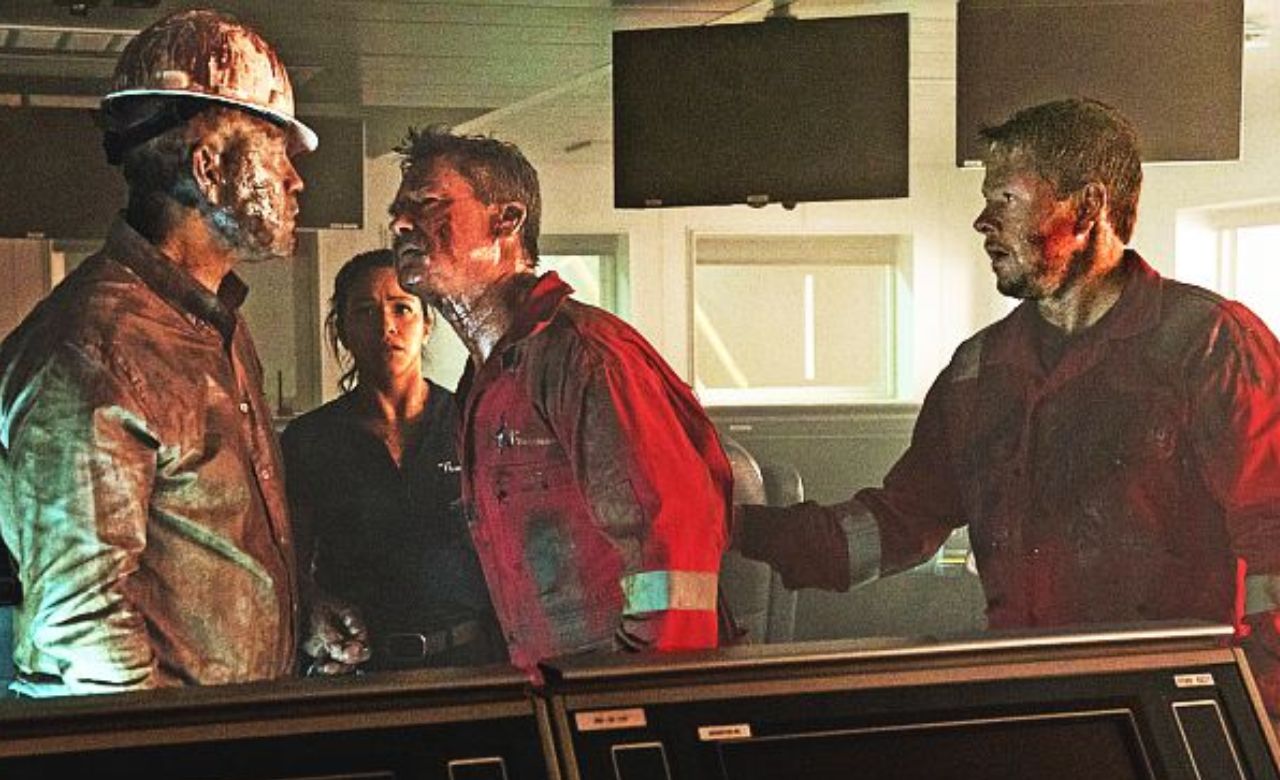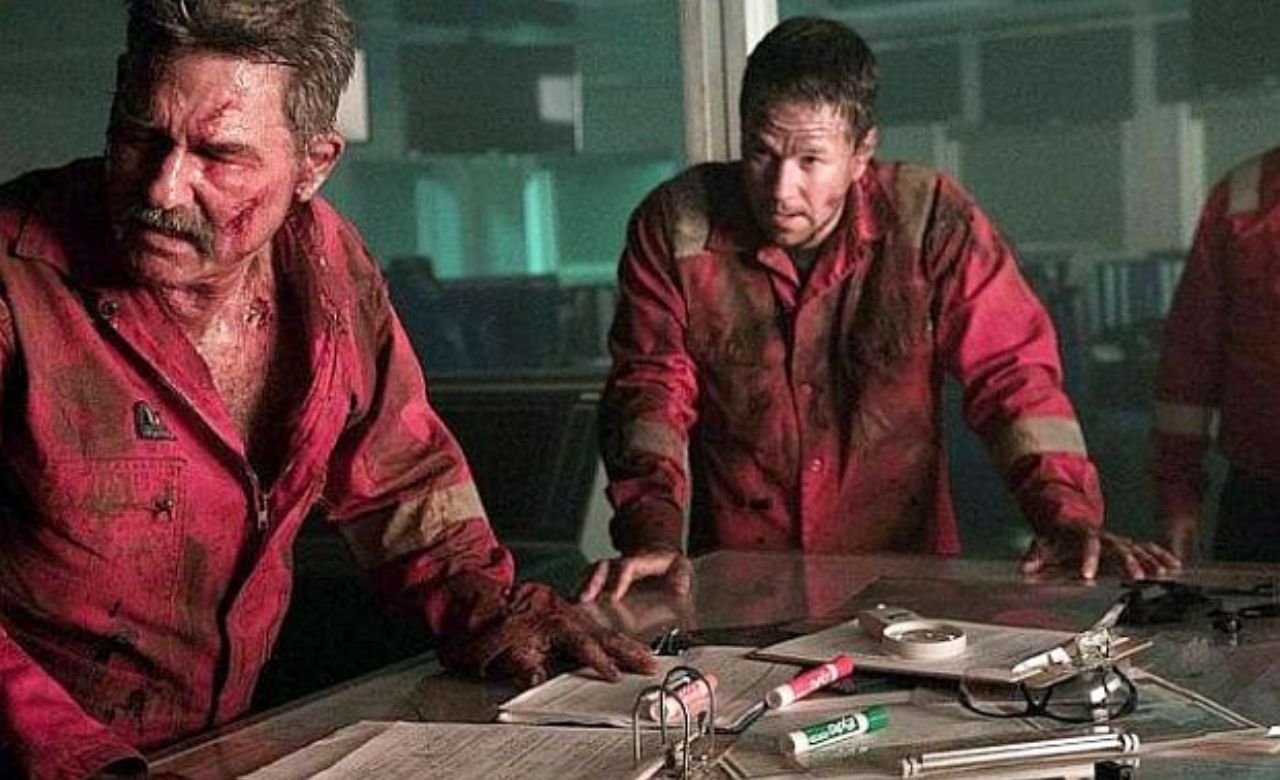Like other high-budget docudramas, the recently released movie Deepwater Horizon makes certain compromises with the truth in the service of big-budget excitement. However, its depiction of the events leading up to the enormous rig explosion in April 2010 off the coast of Louisiana, which killed 11 men and caused the worst offshore oil spill in American history, may have caused some significant false impressions about the real-life deeds of some real-life individuals.
The protagonist of the film, played by Mark Wahlberg, Mike Williams, whose family Scott Bickford represented, remarked that “the tale that’s shown in the movie is far off from the fact of what transpired.” In this article, I’II discusses the reality of the movie Deepwater Horizon.
Williams Speaking The Truth
A real-life video of Williams swearing to “speak the truth, the whole truth, and nothing but the truth” during governmental investigation hearings appears at the beginning and end of the film. The company, Lionsgate, describes it as “the unsung narrative of the heroic men and women on the rig” in between. Many viewers at the New Orleans premiere on Monday had personal ties to the terrifying event and were moved to tears.
The action-packed movie honors the deaths painstakingly illustrates the genuine risks associated with offshore drilling and rightfully places the responsibility on BP. This company owns the well for its financial gain. But all of the producers’ and director Peter Berg’s devotion to accuracy only makes some of the ways the movie deviates from the historical record seem more suspicious.
Matt Brennan, a film critic based in New Orleans, praised the movie for helping him comprehend the fundamentals of what went wrong on the rig. “I do think that any film that takes a real-life subject and dramatizes it is automatically opening itself up to scrutiny in terms of its treatment of the facts,” Brennan said.

Damage Coverage Cost
The fact that BP, the firm, was found guilty of homicide and environmental crimes and was forced to pay a $4 billion punishment is the most obvious omission in the movie. Even the written accounts of what transpired at the conclusion leave out any reference to BP’s guilt. Instead, the movie’s antagonist is Don Vidrine, the nighttime rig manager at BP. John Malkovich portrays him in his characteristically nefarious manner.
The Vidrine character spends a large portion of the movie whining about how much the drilling operation is over budget and nagging the crew, mainly provided by rig owner Transocean, to fill the hole so they can go on to the next drilling assignment. Malkovich’s Vidrine character says, “We all work very hard to guarantee that those moving components are operating as a means to a highly lucrative goal for all of us.“
Vidrine coerces Transocean crew members into removing protective drilling mud from the hole they had bored at the pivotal time of the movie. This was the last mistake in a chain that caused oil and gas to erupt from miles below and trigger terrible explosions.
The Testimonial Report
However, the testimony provided during government investigations and the prosecution of a separate BP officer paints an entirely different image of that instance. Even though the genuine Vidrine did interpret the final stability test of the well incorrectly, records indicate he phoned his superiors in Houston due to confusion about contradictory pressure readings. BP’s investigators were informed by an engineer named Mark Hafele that the test may have given misleading pressure readings and that he agreed with Vidrine’s decision to accept the test as successful.
Hale declined to appear during the government probe. No mention is ever made of the shore-side engineers, BP executives who, unlike Vidrine, openly discussed saving time and money by taking shortcuts in several emails uncovered by the probes. Malkovich plays Vidrine in the movie, explaining to the Transocean drilling crew that something called the “bladder effect” was causing a false pressure reading in the well, a reading that, if accurate, would make it unsafe to plug the well without resealing it.
The film depicts a genuine dispute between BP and Transocean over how to proceed, given the troubling pressure test readings. The “bladder effect” theory, which has been scientifically disproven, was given to Vidrine by the Transocean crew as a likely reason for the conflicting test findings, according to sworn evidence, which proved the contrary true.

Also Read: True Story Behind The Revenant: Tale Of Hugh Glass
Ten of the 11 individuals killed in the blasts who were drilling team members are presented as victims of BP’s haste to finish the project. The drilling team, however, committed several serious mistakes, according to the federal Marine Board probe. In the film, Gina Rodriguez plays Andrea Fleytas, a Transocean employee who battles her employer to raise an urgent warning as the gas begins to flood into the area where the drilling team was operating.
In actuality, Andrea Fleytas testified in front of the Marine Board that she could not sound the general alarm despite having the right to do so because she was confused by more than ten magenta warning lights flashing at once. According to Bickford, men who were in areas with significant quantities of methane gas remained for a minute to 90 seconds as a consequence of the general warning not being sounded.
And those locations caught fire, killing those individuals. Other minor factual inaccuracies in the movie include the recurrent representation of gas and oil breaking the sea bottom surrounding the well before and after the disaster and friendships and phone conversations that didn’t occur. Forensic investigations into the catastrophe revealed that nothing like it occurred. Instead, the gloomy visual of bubbles pouring out of the earth served to warn viewers that danger was building underneath.





